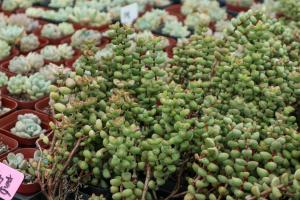How to Winterize Hibiscus Plants in Pots
Hibiscus plants are a popular choice for gardeners due to their vibrant flowers and ability to thrive in warm climates. However, with the arrival of winter, these tropical plants need special care to survive in cooler temperatures. If you have hibiscus plants in pots, it is essential to winterize them properly to ensure their health and longevity. Here are some tips to help you winterize your hibiscus plants in pots:
Choose the Right Location
The first step in winterizing your hibiscus plants is to select the right location. Hibiscus plants are sensitive to cold temperatures, so it is best to move the pots indoors in winter. Choose a spot in your home that receives sufficient sunlight, such as near a south-facing window. Make sure the area is well-ventilated and away from drafts.
Reduce Watering
During the winter months, hibiscus plants enter a period of dormancy. This means that they require less water than usual. Overwatering can lead to root rot, which can be fatal for your plant. Reduce watering frequency to once a week, or as needed. Monitor the soil moisture level before watering, and only do so when the top inch of soil is dry.
Adjust Light Levels
In addition to reducing watering, you will need to adjust the light levels for your hibiscus plants in winter. They will require less direct sunlight than in summer. However, they still need a minimum of 4-5 hours of bright, indirect sunlight each day. If you notice that your plants are not receiving enough light, you can supplement with indoor grow lights.
Lower the Temperature
Hibiscus plants prefer warm temperatures, but they can tolerate cooler temperatures when properly winterized. Keep the temperature in the room between 50-60 degrees Fahrenheit. Avoid placing the plants near drafty windows or doors, as this will expose them to colder temperatures.
Prune Your Plants
Pruning hibiscus plants before winter can help promote healthy growth in spring. Use sharp pruners to remove any dead, diseased or damaged branches. This will also help keep the plant's size manageable, allowing it to fit into its indoor location more easily. Leave some healthy branches intact to encourage regrowth in spring.
Protect from Pests
Pests can be an issue for hibiscus plants in winter, particularly if they are kept indoors. To prevent infestations, inspect your plants regularly and remove any pests you find. You can also use organic pest control methods like neem oil or insecticidal soap. Additionally, avoid over-fertilizing your plants, as excess nutrients can attract pests.
By following these tips, you can properly winterize your hibiscus plants in pots and ensure their health and longevity. With a little bit of care, your hibiscus will be ready to bloom again in spring!

 how many times do yo...
how many times do yo... how many planted tre...
how many planted tre... how many pine trees ...
how many pine trees ... how many pecan trees...
how many pecan trees... how many plants comp...
how many plants comp... how many plants can ...
how many plants can ... how many plants and ...
how many plants and ... how many pepper plan...
how many pepper plan...
































